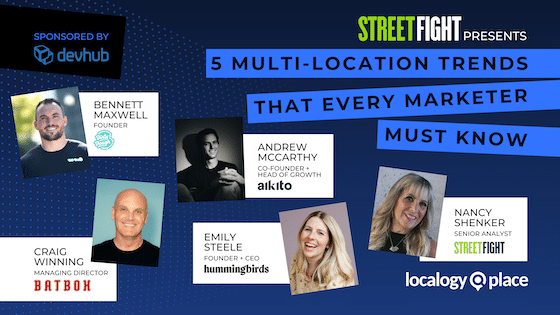In recent months we’ve seen endless articles, LinkedIn posts, and Twitter threads, exploring how AI will change everything. From search to sales to content creation and even the practice of law. And many if not most of these predictions are likely to come true. If they haven’t already.
Another area where it appears AI will have a real impact is videoconferencing.
Even before the conversation shifted to AI, several startups were launched with the sole objective of changing the videoconferencing culture.
So what, exactly, is wrong with online meetings?
Apparently, everything.
At least it seems so if you listen to the top-tier entrepreneurs today who are pouring capital, energy, and know-how into startups designed to fix a broken online meeting culture. And, let’s face it, if you consider your own experience with online meetings, you might draw a similar conclusion.
The Cloud HQ
One entrepreneur determined to fix meeting culture is Howard Lerman. He is the co-founder of Yext who is now all in on Roam. This is his new “Cloud HQ” start-up that boasts of driving down the average length of online meetings from the dreaded 30-minute default length to “8:34”. And there is little doubt that the average will continue to fall if Lerman has anything to say about it.
Roam is embracing the new reality of hybrid work being the norm. And Lerman is essentially positioning Roam as a kind of OS for the hybrid workplace. And while AI isn’t leading the Roam story, it’s no doubt central to Roam’s very tech-forward vision.
Last November Lerman sat down for an interview with CNBC’s Andrew Ross-Sorkin to explain Roam. He offered a viewpoint, in typical Lerman style, on why Roam is hitting the market at the right time.
In the interview, Lerman didn’t resist being compared to Zoom. In fact, he leaned into why he thinks Zoom is not the right platform for the world of hybrid work.
“The big problem with Zoom,” Lerman told Ross-Sorkin, “is that things that should take two people five minutes to do today are now scheduled for five people on a 30-minute call next week.”
Lerman will be a headline speaker at Localogy’s upcoming L23 Conference in Coronado Bay, CA.
Leaning into the AI opportunity
Two other well-known entrepreneurs with connections to local are also attacking the meeting space. And they are both leading with AI as a big part of the solution to improving meeting culture.
One is David Shim. He is the former CEO of Foursquare and the co-founder of Placed (acquired by Foursquare). Shim launched Read AI in 2021 to use AI to improve online “meeting wellness”. For example by pulling signals from meetings to reveal the most important takeaways, the moments of the highest and lowest engagement. And also the commitments made during the meeting to help focus participants on follow-ups and accountability.
Read is not a videoconferencing platform as much as it is a tool that works alongside video platforms like Zoom. So rather than competing with Zoom, Read is an app that can help Zoom users extract more value from Zoom meetings. In January, Zoom selected Read to be featured among Zoom’s “essential apps.”
The pressure to ship innovative features is relentless for any startup in a competitive space. Read delivered on this imperative recently when it rolled out a feature that spins two-minute highlight reels out of long recorded online meetings. Read wants us to think of this as Zoom meets ESPN Sports Center.
“What’s more boring than an hour-long meeting? A recording of an hour-long meeting,” Shim said in the feature announcement. “Using a multi-modal approach to understanding meetings, Read is able to transform a recording of a 60-minute meeting into a 2-minute video highlight reel, or a 30-second trailer. It’s like watching ESPN, where instead of replaying an entire baseball game, you get the most important moments condensed into a short clip.”
Do We Really Need Zoom Highlight Reels?
This innovation, and the broader notion of AI’s role in transforming online meetings, was one of the topics discussed in this week’s recording of Localogy’s This Week in Local podcast.
On the episode, my co-host Mike Boland and I explore whether a videoconferencing highlight reel has real utility.
“I think the idea is that, instead of watching the 60-minute replay, which no one is going to do,” “Instead of watching the 60-minute meeting to decide whether I need to call Bob and say, ‘Where’s that thing that you said you were going to do in the meeting?’,” I said on the episode, which drops on Monday. “That commitment is now going to be part of the highlight reel.”
Mike used this thread to make a larger point about how we spend our time in remote and hybrid work settings.
“Let form follow function,” Mike said on the episode. “Right now, it’s a situation where it’s form over function. The form being, ‘Hey, this has got to fit into a 30-minute container.’ The function may be five minutes. It may be 45 minutes.”
Pivoting into the Wind
Another entrepreneur chasing the opportunity to transform videoconferencing is Vinny Lingham, a serial entrepreneur (Civic, Gyft, Yola). His latest startup, Waitroom, emerged last year as a platform to allow business influencers to connect with followers for brief sequential 1:1 online meetings (it had similarities to what Intro is doing now).
Waitroom recently relaunched with a significant pivot away from the influencer space to become a direct challenger to Zoom. Waitroom is also using AI tools (echoing what Read is doing) designed to make videoconferencing more productive. For example, it uses AI to create and analyze meeting transcripts for key takeaways, follow-up items, etc.
“We are trying to change meeting culture, that’s what we’re trying to do. So that everyone gets to say what they need to say and move on. You capture it all into an AI system that has all this information and valuable output,” Lingham said in a recent interview with Localogy Insider.
“The meeting should be the input. And the output is all these action items, tasks, follow-ups, reminders, all these things. So it’s no longer just static meetings. It’s intelligent meetings.”
Lingham will also be a speaker at the upcoming L23 Conference.
Lerman and Lingham seem to make a similar point about what each is trying to do with their respective platforms. It’s not about eliminating meetings per se but making them shorter and more efficient. For example, from 30 minutes to 8:34.
Lingham told us that he could see a world where using new videoconferencing tools (like his Waitroom) leads to having more short meetings in a day, taking up less aggregate time and generating better outcomes.
“What I think will happen is, if people start seeing how powerful this product is, they will go from having one hour-long meeting to maybe four 10-minute meetings,” Lingham told Localogy Insider. “So they’re going to save time. The number of meetings may go up, but your engagement time is shorter per meeting.”




